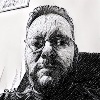All week long I’ve been looking forward to organizing and cleaning the garage today. So what are your “boring old man” weekend plans?
Page 9 of 9
#
📍 Tokyo International (Haneda) Airport (HND) (東京国際空港 (羽田空港))
Brb. Popping to Melbourne via Singapore. 🇦🇺
Location: Tokyo, Tokyo, Japan
Comment by email
Brb. Popping to Melbourne via Singapore. 🇦🇺
Location: Tokyo, Tokyo, Japan
Comment by email
